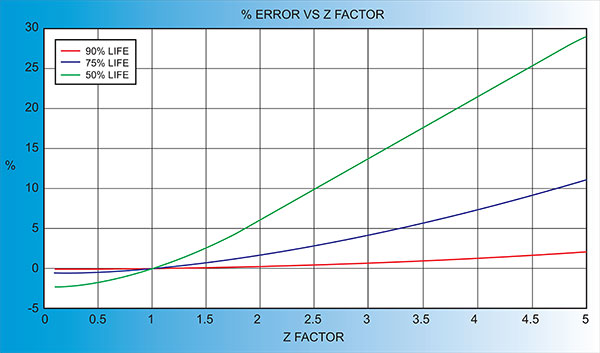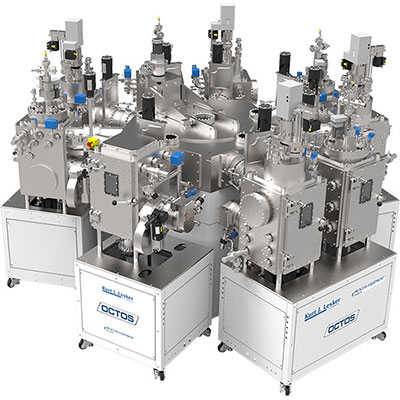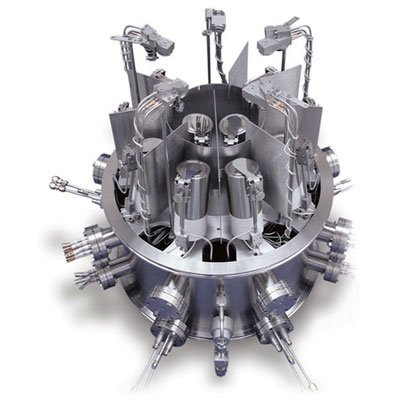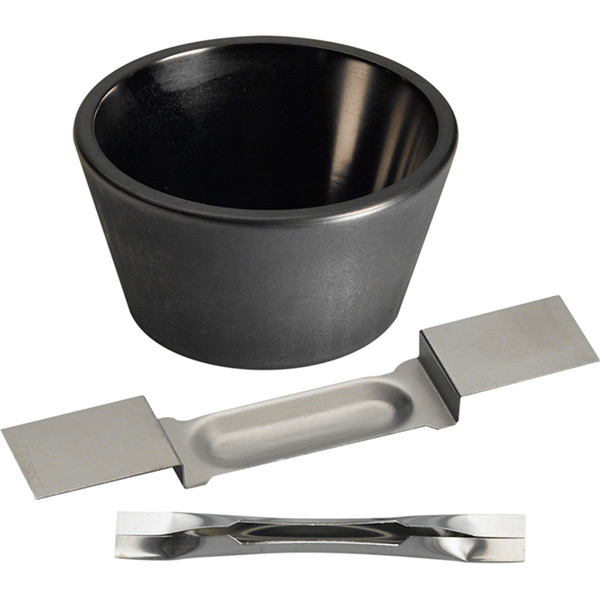Tungsten (W) Wire Overview
We sell these pellets and pieces by unit weight for evaporation use in deposition processes. These approximate materials prices are published to provide budgetary guidelines. Actual prices can vary and may be higher or lower, as determined by availability and market fluctuations. To speak to someone directly about current pricing, please click here .
Tungsten (W) General Information
Tungsten, also known as Wolfram, is one of the densest elements in the world. It has a density of 19.3 g/cc, a melting point of 3,410°C, and a vapor pressure of 10-4 Torr at 2,757°C. It is lustrous and grayish-white in appearance. It is known to have the highest melting point of all metals and its characteristic hardness can make it very difficult to machine and forge in pure form. Tungsten is commonly used to make electric filaments. Tungsten carbide is found in drills, saws, and jewelry. Tungsten is evaporated under vacuum for the production of semiconductors, fuel cells, and sensors.
Tungsten (W) Specifications
| Material Type | Tungsten |
| Symbol | W |
| Atomic Weight | 183.84 |
| Atomic Number | 74 |
| Color/Appearance | Grayish White, Lustrous, Metallic |
| Thermal Conductivity | 174 W/m.K |
| Melting Point (°C) | 3,410 |
| Coefficient of Thermal Expansion | 4.5 x 10-6/K |
| Theoretical Density (g/cc) | 19.25 |
| Z Ratio | 0.163 |
| E-Beam | Good |
| E-Beam Crucible Liner Material | Direct in Hearth FABMATE® |
| Temp. (°C) for Given Vap. Press. (Torr) |
10-8: 2,117 10-6: 2,407 10-4: 2,757 |
| Comments | Forms volatile oxides. Films hard and adherent. |
| Suggested QCM Crystal | Silver Crystal: 750-1001-G10**** |
**** Suggestion based on previous experience but could vary by process. Contact local KJLC Sales Manager for further information
Empirical Determination of Z-Factor
Unfortunately, Z Factor and Shear Modulus are not readily available for many materials. In this case, the Z-Factor can also be determined empirically using the following method:
- Deposit material until Crystal Life is near 50%, or near the end of life, whichever is sooner.
- Place a new substrate adjacent to the used quartz sensor.
- Set QCM Density to the calibrated value; Tooling to 100%
- Zero thickness
- Deposit approximately 1000 to 5000 A of material on the substrate.
- Use a profilometer or interferometer to measure the actual substrate film thickness.
- Adjust the Z Factor of the instrument until the correct thickness reading is shown.
Another alternative is to change crystals frequently and ignore the error. The graph below shows the % Error in Rate/Thickness from using the wrong Z Factor. For a crystal with 90% life, the error is negligible for even large errors in the programmed versus actual Z Factor.

Thermal Evaporation of Tungsten (W)
Tungsten is nearly impossible to deposit by thermal evaporation due to the high power required for the material to evaporate. E-beam evaporation or magnetron sputtering are the recommended methods for tungsten deposition.
E-beam Evaporation of Tungsten (W)
E-beam evaporation of tungsten is possible but requires a different approach due to its high power requirements. We recommend using a tungsten rod in a FABMATE® crucible liner. The diameter of the rod is the smallest inner diameter of the crucible liner. The rod is only in contact with the liner on the lower flat which limits thermal conductivity into the hearth. A fixed, focused beam should be used and centered directly in the middle of the tungsten rod. At a power output of 5kW, we anticipate the rate will peak at about 5-10 Angstroms per second and will quickly drop off as the e-beam digs into the rod.
The e-beam should be closely monitored (through shade 9 welder's glass) while evaporation is in process because a high power e-beam can quickly eat through a crucible liner and the copper hearth. The e-beam should be controlled so that it is focused on the material at all times and the run should be terminated if the e-beam or material is not cooperating. Great care should be taken during the entire evaporation cycle.
Tungsten can also be evaporated directly from the copper hearth of the e-gun. Because of this, some customers prefer to use a pre-machined slug (or starter source) that is directly placed in the hearth pocket. The two main benefits of using a starter source are ease of use and handling as well as superior packing density.
Because not using a crucible liner is not always an option, especially in shared systems, some customers will use a copper crucible liner and place the starter source in the copper crucible liner as opposed to placing directly in the hearth. Crucible liners should be stored in a cool, dry place and always handled with gloves or forceps.
KJLC can produce these rods or starter sources. Contact us by clicking here with your e-gun manufacturer, pocket size, and number of hearth pockets in order for us to produce a quote.
See highlighted results that match your result in the table below.
Ordering Table
| Material | Description | Size | Quantity | Purity | Part Number | Price | In Stock | Add To Cart | |
|---|---|---|---|---|---|---|---|---|---|
| Material | Description | Size | Quantity | Purity | Part Number | Price | In Stock | Add To Cart | |
| Tungsten |
TUNGSTEN WIRE, |
0.1mm Dia. | Per ft | 99.95% | EVMW35.1MMFT | P.O.R. |
|
||
| Tungsten |
TUNGSTEN WIRE, |
0.2mm Dia. | 10m | 99.95% | EVMW35.2MM | $97.00 |
|
||
| Tungsten |
TUNGSTEN WIRE, |
0.5mm Dia. | 10m | 99.95% | EVMW35.5MM | $115.00 |
|
||
| Tungsten |
TUNGSTEN WIRE, |
1.0mm Dia. | 5m | 99.95% | EVMW341MMX5M | P.O.R. |
|







